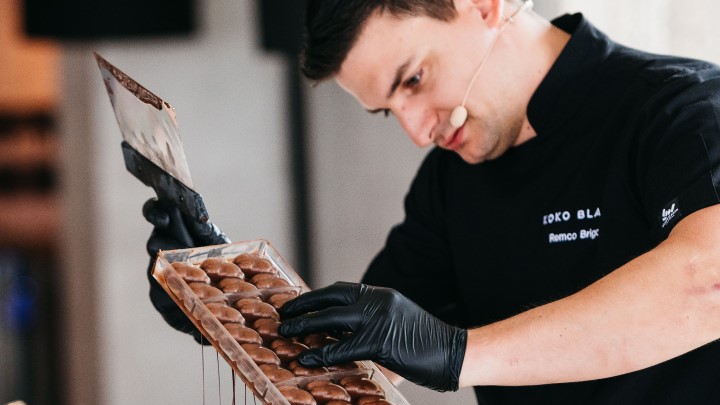Ten consecutive cash rate rises, as well as grocery price increases of almost 10 per cent during the three months to December 2022, could set the scene for the next major retail sales event: Easter. The holiday is expected to see Australians indulge, according to the Australian Retailers Association (ARA), which is tipping consumers will spend almost $1.7 billion during Easter – a figure which is up 14.5 per cent on 2022, and which outstrips base-line inflationary increases. ARA CEO Paul
O Paul Zahra noted that although Australians are feeling the pinch from constant price increases, many see Easter as a respite from the difficulties of the year so far, and the “last break before winter sets in.”.
“Shoppers are already beginning to tighten their purse strings, [but] these special occasions are a welcome time of indulgence,” Zahra said.
With that being said, how are the major chocolate brands in Australia preparing for the event this year?
Cadbury
According to Paul Chatfield vice president of marketing ANZ at Mondelēz International, which owns Cadbury, the holiday has taken on greater social significance following the pandemic, though the business expects Australians to make more considered purchases this year.
“It’s no surprise that in uncertain Covid times, with lockdowns, restrictions and social distancing, Easter gained an even greater focus as it was one of the few seasonal events families could look forward to celebrating together,” Chatfield told Inside Retail.
“We’re committed to providing value for Australians at Easter time, and as cost-of-living pressures continue to rise, we anticipate families to feel the pinch and therefore be very considerate when purchasing their gifts this Easter.”
Chatfield noted that Easter chocolate is one of the most impulsive purchases of the year for many people, and that it’s incredibly important for brands to build up trust with their customers so that when they’re deciding which chocolate to buy, they feel like they can make an informed decision.
“We believe consumer trust will further come to the forefront as household budgets continue tightening, as they lean on brands such as Cadbury Australia to de-risk their purchases.”
Koko Black
It isn’t just the international players preparing well-ahead of schedule this year. Australian gourmet chocolate brand Koko Black started producing its chocolate eggs and bunnies, including vegan alternatives, six months in advance of Easter, head chocolatier Remco Brigou told Inside Retail.
“Shoppers are not just looking to buy a product – or in our case a piece of chocolate – they’re interested in how the product is made, where it is made, and what’s in it,” Brigou said.
“This is why we are really proud of the work we have done to ensure all of our products celebrate Australian ingredients and are 100 per cent natural, and made in Melbourne.”
Koko Black recently enjoyed its most successful Christmas period ever, with sales up 52 per cent, and launched new stores across Sydney and Melbourne, increasing its exposure to the public, Brigou said.
“We definitely noticed that after Covid, people want to celebrate Easter properly again and so the demand has gone up immensely.”
Darrell Lea
Koko Black’s foray into vegan chocolate isn’t the industry’s only shift, with more ‘better for you’ chocolates entering the market and doing well, according to Darrell Lea’s general manager of marketing Johanna Campbell.
“Brands focused on delivering great tasting chocolate with no added sugar are becoming increasingly popular with consumers for the Easter season,” Campbell told Inside Retail.
“And then at the other end of the spectrum are even more indulgent Easter products, with more inclusions and different flavours and textures.”
Campbell said that Darrell Lea has placed a lot of emphasis on its convenience channel this year, as customers lead increasingly busy lives.
“Having the right, lead-selling Darrell Lea Easter products available ‘within arms reach’ is an important part of the mix,” Campbell said.
“Our insights show us that more and more customers are purchasing Easter products when they are ‘out and about’, and we want to make sure we maximise this opportunity.”
What can we expect?
With all that taken into account, it’s likely that Easter sales could look substantially different this year than in years prior, with a more expensive, and more expansive, selection of products available for customers to purchase.
Publicis Sapient client partner Niel Boulton told Inside Retail, however, that while more customers are returning to bricks-and-mortar retail, the gap between what customers will allow themselves to spend, and what they actually can, is as yet unknown.
“The key to the Easter trade this year will be the delta between the increase in revenue due to rising prices, against the number of units being sold,” Boulton said.
This doesn’t necessarily mean that lower priced goods will fly off the shelves, however.
“Over the past few years, companies have seen a continual move to higher quality and premium products and will need to continue to innovate and clearly define the pricing tiers of their products if they want to capture the higher end of the market,” Boulton said.
“This won’t necessarily see a stampede to the lower end of the market. [Instead], shoppers will choose products that deliver value for money and reflect well on the gift giver, with considerations such as the responsible sourcing of raw materials and eco-friendly choices, such as 100% recyclable packaging being high on the consideration list.”
This story originally appeared in the upcoming April issue of Inside FMCG magazine.

